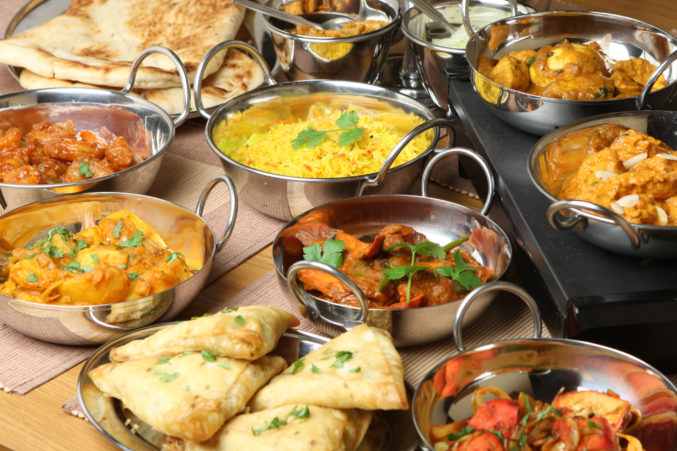India is a country that speaks of scary folklore, a scintillating history, remarkable talent and piquant food. The delicacies offered by various regions in the country are a treat for the taste buds. They warm the heart and fill the stomach. Indian dishes remind us why we must stick to our roots, and how eradicating our roots will nullify our existence. Indian food is reminiscent of good memories and soothing flashbacks, as it reminds us of our mother’s love. Culinary excellence is nothing new for a country like India. There is a reason why so many tourists come to India every year; it’s probably the smell of its ancient spices which lures them in!

The benefits of Indian food are two-fold. It caters not only to the taste buds but also to the health and wellness of a person. The burst of exotic flavours due to the authentic spices used in traditional Indian recipes has many unknown health benefits.
- Indian food consists of a large number of spices. Indian dishes are usually marinated in a blend of spices which adds flavour to the dish. Spices such as chillies, turmeric, ginger, garlic, asafoetida, nutmeg, fennel, and fenugreek have many medicinal and healing properties along with great taste. The use of herbs such as coriander and curry leaves also provide health benefits. This means that consumers of Indian food are spooning health into their bodies with every meal.
- Yoghurt is one of the main ingredients in dips such as raita and curries. This reduces the use of cream in sauces and mayonnaise in dips, creating an overall healthy alternative to food. Yoghurt keeps the digestive tract clean and aids in the creation of pro-biotic bacteria, which, in turn, helps gastrointestinal health.
- Pulses such as moong, toor and chana dal, lentils and beans make up a majority of Indian diets due to its surplus availability. These pulses are rich in protein and minerals which are crucial for the body. Meat dishes such as tandoori dishes use less creamy sauces, which not only retain flavours but also reduce fats.
- Vegetables and fruits make up another integral part of the Indian diet. Various dishes such as undhiyo, missal, pav-bhaji, and sabjis make optimal use of vegetables. This boosts the vitamin and mineral intake of the body which ultimately helps in fighting diseases.
- The inclusion of rice and chapati keeps the carbohydrate level intact and maintains the overall energy levels of the body.
- Indian dishes are usually prepared fresh for every meal, which means that there are lesser preservatives in the food to increase its shelf value. Fresh produce is used for every meal and this just increases the health quotient. For achaars and chutneys, spices are used for preservation which means it’s all natural.
- The wide variety provided by Indian dishes keeps a person satiated. There is no room to get bored with the different types of colourful and appetizing preparations offered.
In conclusion, Indian food is a huge array of preparations which belong to various food groups and come together to form a healthy, balanced diet.

